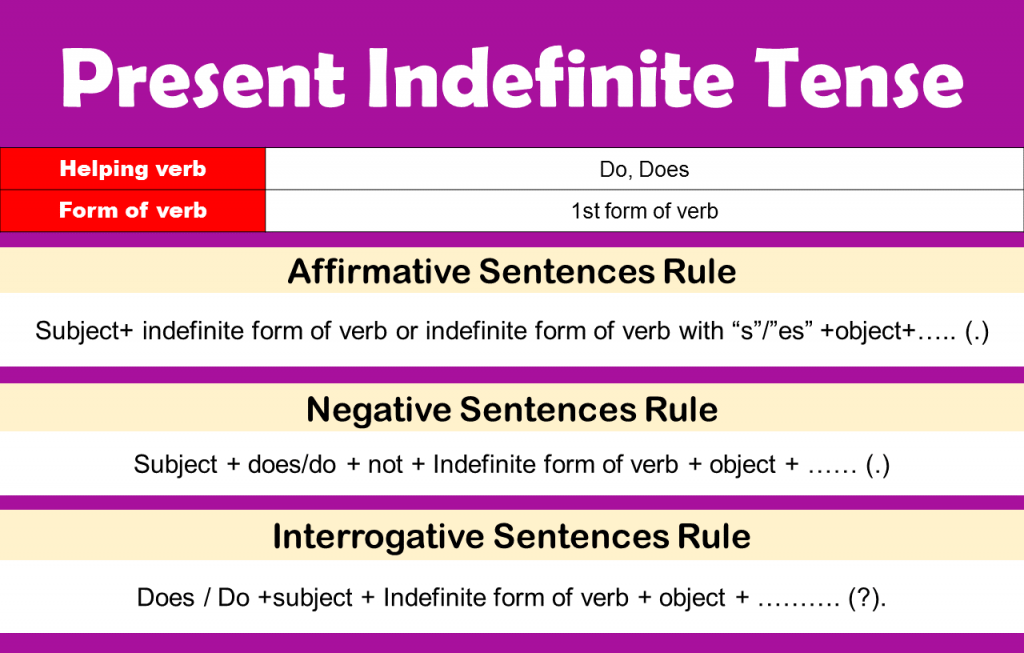
Present Indefinite Tense Rules & Examples GrammarVocab
Here you have to keep in mind -. In Present Indefinite Tense always you have to use the present form of the main verb. However, if the Subject is the Third Person Singular Number, then s, es or ies have to be added at the end of the main verb. Sentence Structure: S + V + O. They like sweets. They - Subject.

40+ Sentences For Present Indefinite Tense Practice Present
The present indefinite tense, also known as the simple present tense, is used to describe actions that happen regularly, facts, general truths, and habitual actions. It is formed by using the base form of the verb. Now, let's explore some examples of present indefinite tense sentences to understand it better. Present Indefinite Tense Examples

Uses of Present Indefinite Tense English lessons for kids, English
Present indefinite tense is a grammatical tense used to describe actions or situations that are happening regularly, habitually, or are general truths. In this tense, the action is not tied to a specific time and is expressed in its base form or with the addition of an "-s" or "-es" ending for third-person singular subjects (he, she, it).

Present indefinite tense simple present tense YouTube
In the Present Indefinite Tense, we talk about actions that are habitual, general truths, or routine occurrences. Using clear examples helps learners understand this tense better. For instance, when you say "I eat breakfast every morning," you're talking about a regular habit.
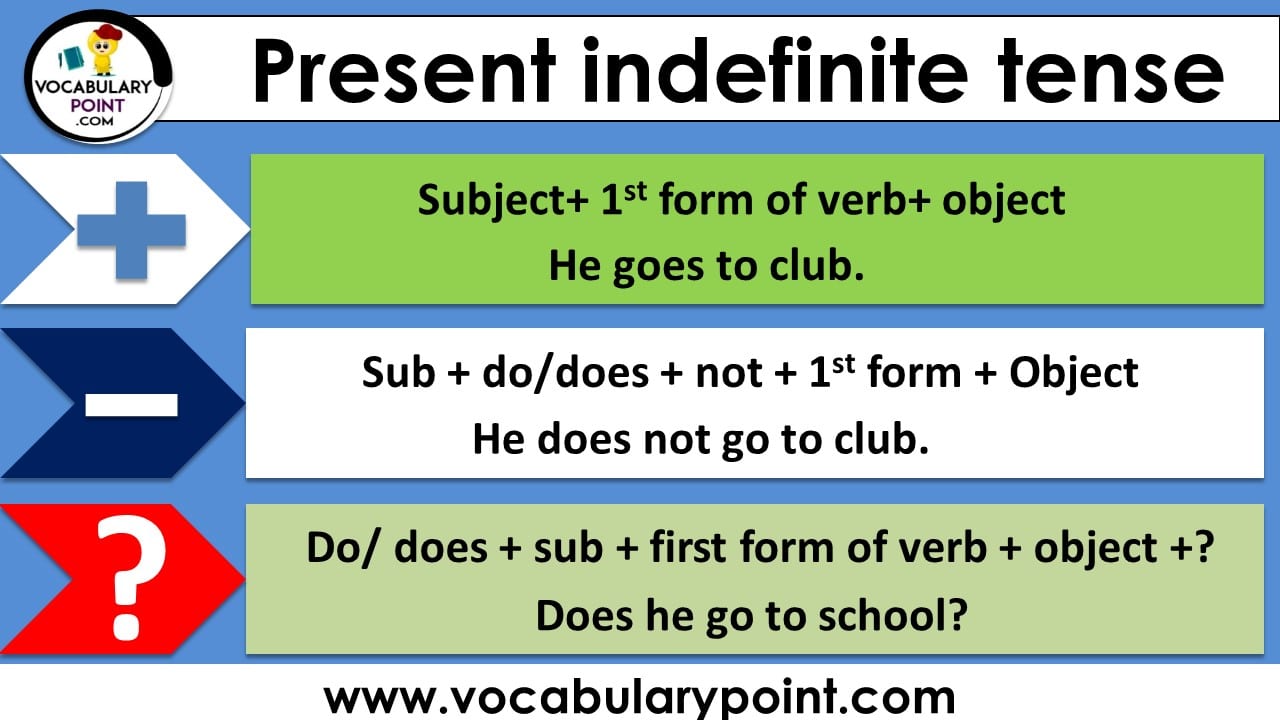
Present Indefinite Tense Examples, sentences & formation Vocabulary
Verb: The action word in its base form Object (optional): The person or thing that receives the action Understanding the basic structure of the Present Indefinite Tense is essential for both native speakers and learners of English, as it forms the foundation for a large portion of everyday communication.

100 Present Indefinite Tense Sentences In English EnglishTeachoo
Present indefinite tense, examples, sentences and their formation .The present indefinite tense is an incredibly important grammar concept for English language learners, as it is one of the most commonly used verb tenses in the language. It can be used to talk about habits, routines, general truths and facts, and current states of being.
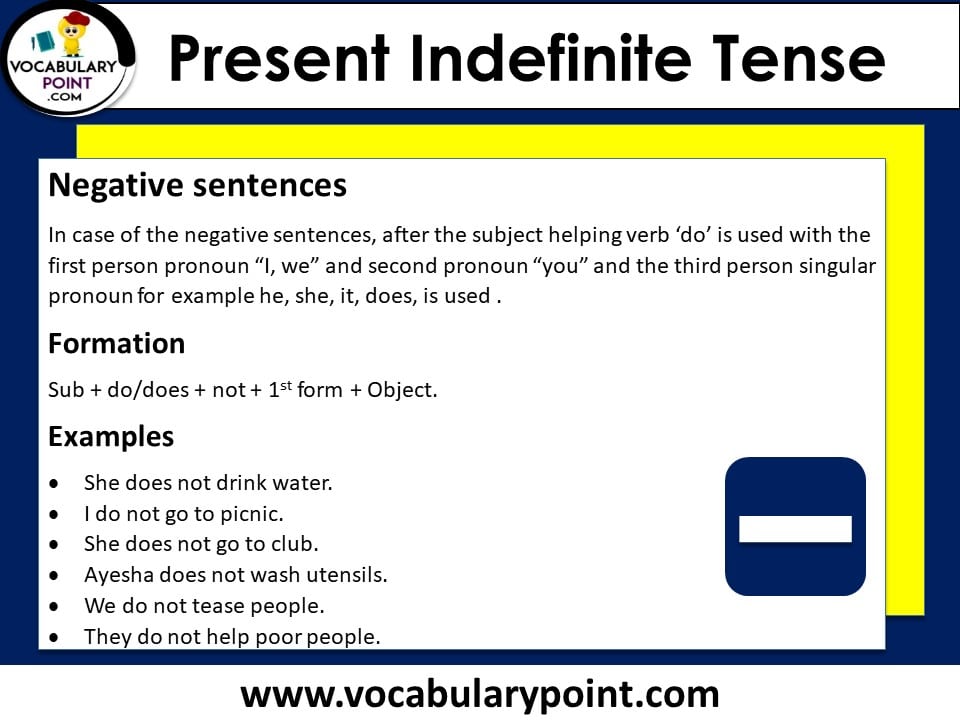
Present Indefinite Tense Examples, sentences & formation Vocabulary
Let's explore the 100 useful sentences of present indefinite or simple present tense. We study English every day. You play football on Sundays. The sun rises in the east. The Earth revolves around the sun. Birds sing in the morning. The train arrives at 4 PM every day. My brother reads books in his free time.

Present Indefinite Tense Rules With Examples VK Study
1. Repeated actions This is most common way to use the Present Indefinite tense. Whenever we talk about things that we do repeatedly, we use the Present Indefinite tense. Some of the things I repeatedly do: I wake up daily. I speak. I take a bath. I smile. I laugh. I go outside.
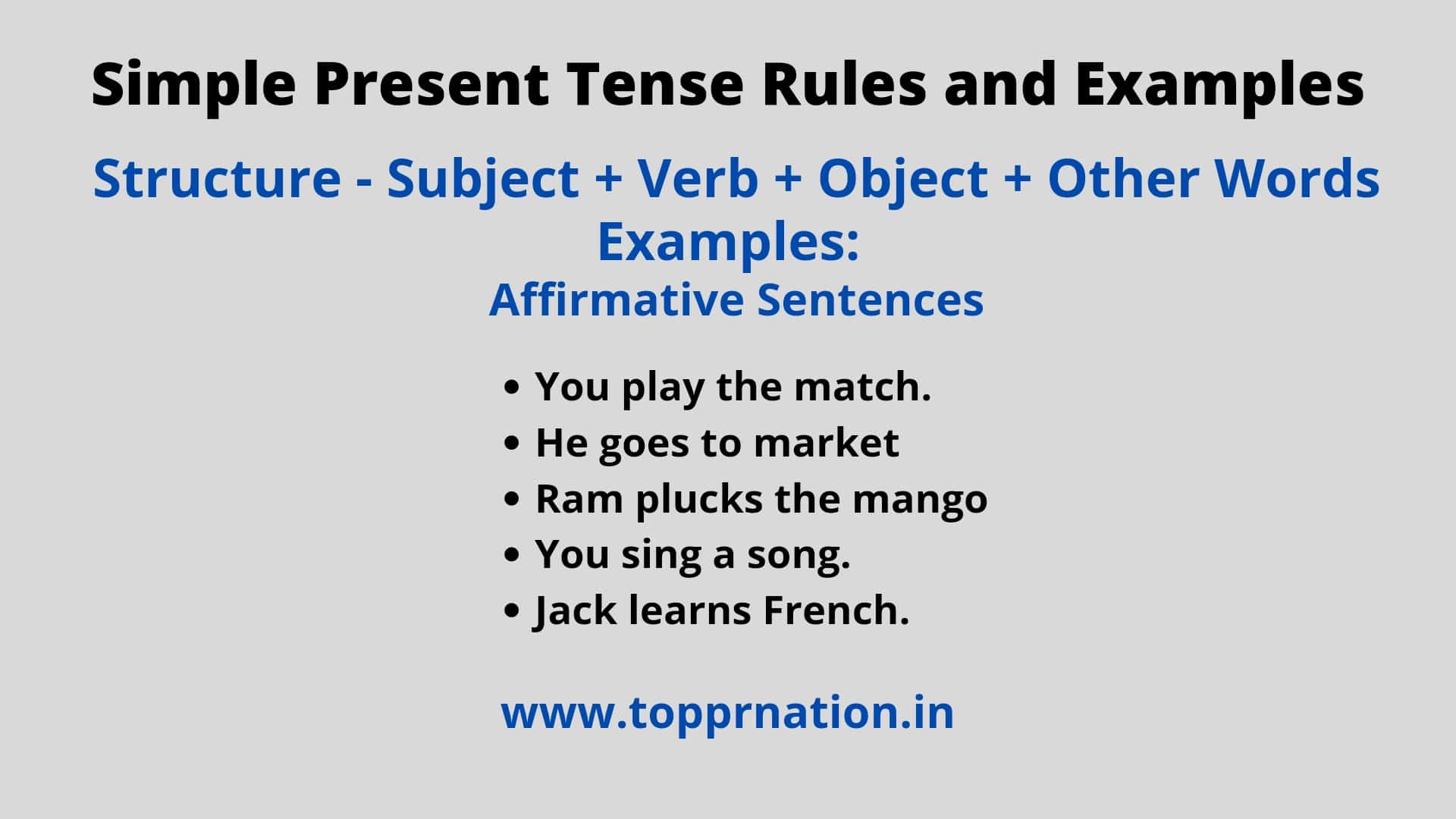
Simple Present Tense (Present Indefinite Tense) Rules and Examples
The present indefinite tense, also known as the present simple tense, is used to describe actions or states that are general, habitual, or regularly occurring in the present. English speakers use it to talk about facts, routines, permanent situations, or things that happen often. We use the base form of the verb (infinitive) for most subjects.

Examples of Present Indefinite Tense in Sentences »
Affirmative Sentences. The Present Indefinite Affirmative Tense, also known as the Simple Present Tense, is a grammatical tense used to describe actions, events, or situations that are generally true, habitual, or regularly occurring in the present time.It is used to convey facts, routines, and timeless statements. In this tense, the action is not necessarily happening right at the moment of.
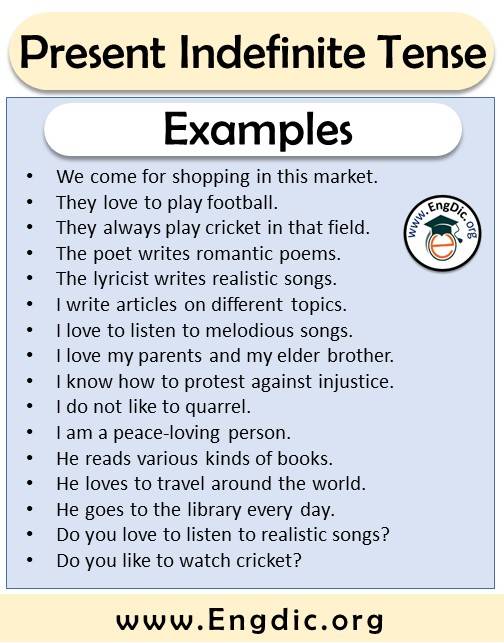
Present Indefinite Tense EngDic
Definition of Present Indefinite Tense: Present Indefinite Tense represents an action which is regular or normal or true and uses the base form of the verb. In case of the third person singular number, 's or es' is added with the verb. Examples of Present Indefinite Tense: I write articles on different topics. He reads various kinds of books.
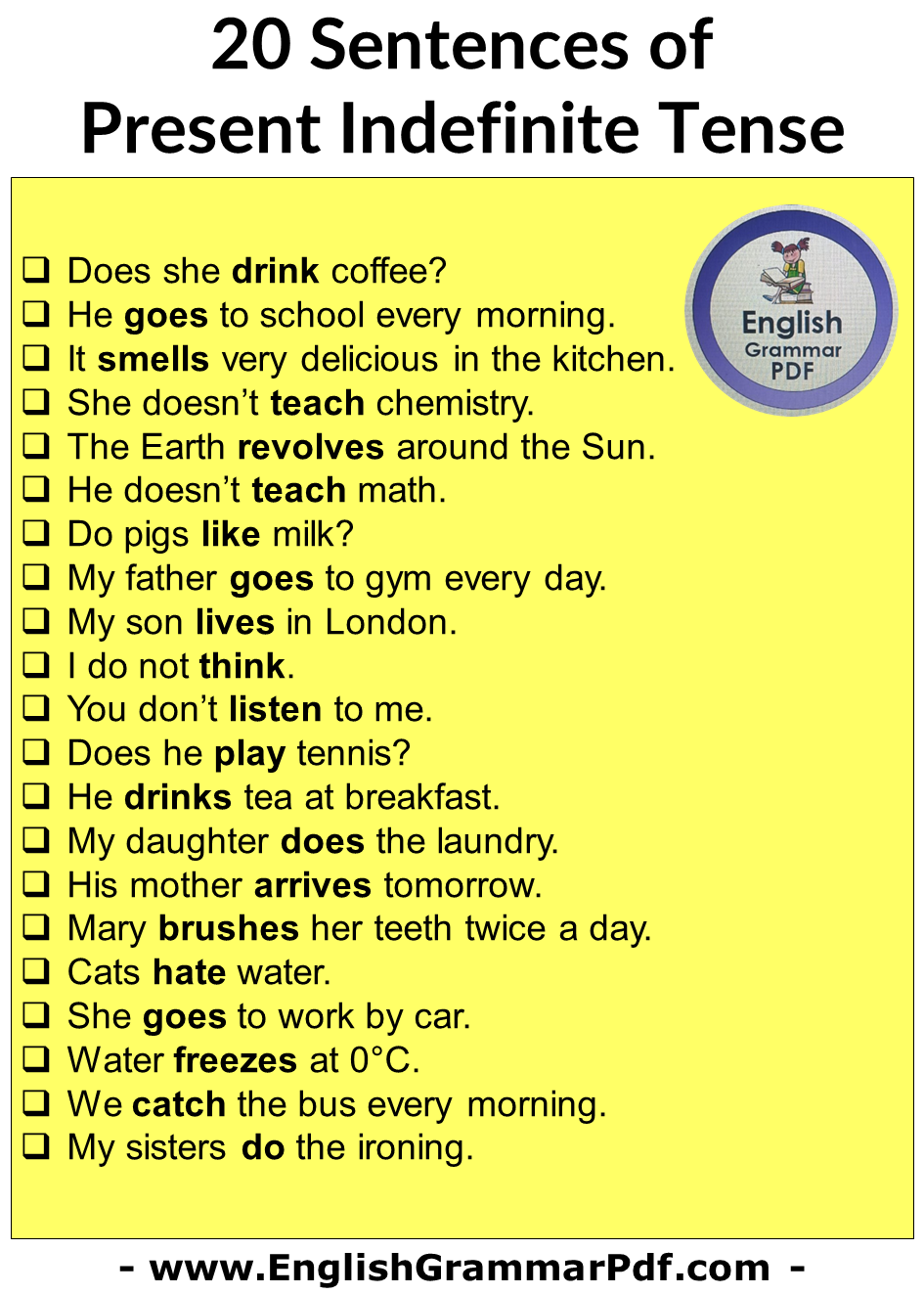
20 Sentences of Present Indefinite Tense PDF English Grammar Pdf
Here are lots of Present Indefinite Tense example sentences to practice and learn Present Indefinite Tense. I am sure that you will love them. Examples of Present Indefinite Tense Positive /Affirmative Sentences: Present Indefinite Tense • I am a good student. • She goes to school. • He is the best student in the class. • Tajmahal blows my mind.
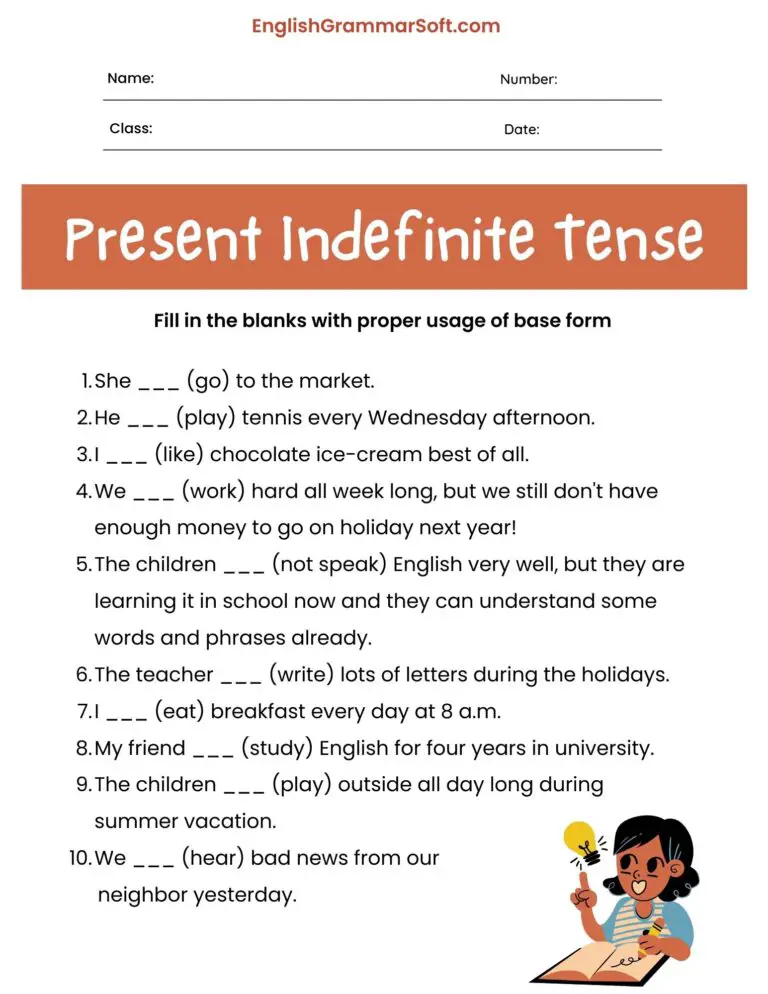
Present Indefinite Tense in English (Rules, Formula, 100 Examples
The present indefinite tense is a verb tense that describes an action or state that is happening at the moment. The present indefinite tense can also be used to describe actions or states that are always true. For example, when someone says "I am hungry," they are describing their current feelings.

100+ Present Indefinite Tense Examples All Types of Sentences
Tense refers to the time frame of the action taking place and is described by using the verb. Present Indefinite Tense or Present Tense can be defined as the action that is done in the present however there is no definite time limit given to it being accomplished.
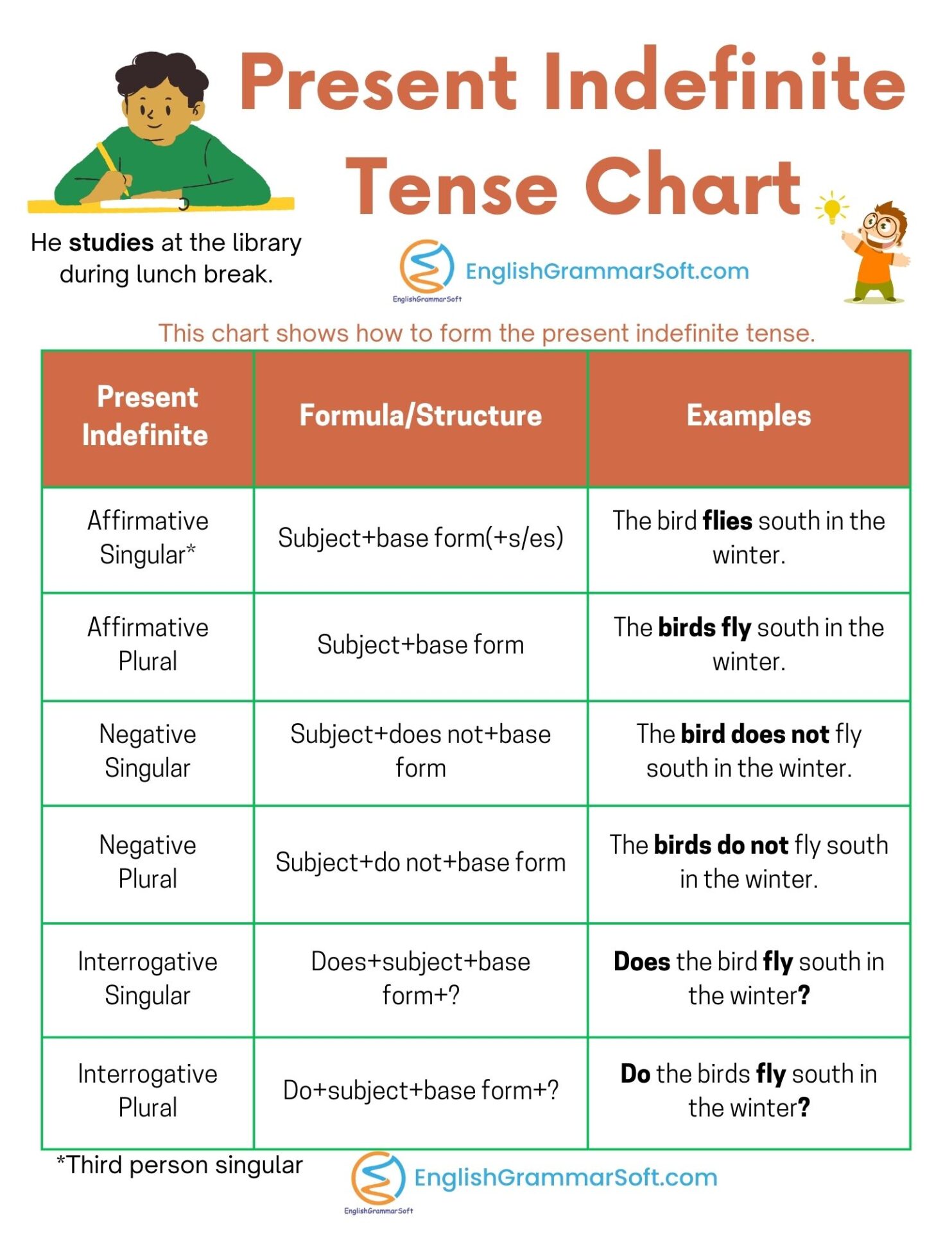
Present Indefinite Tense in English (Rules, Formula, 100 Examples
Rule 1. In the Present Indefinite Tense, we use the 1st form of verb + s/es with He, She, It and Name. e.g. These examples will help you understand this. He watches videos on Youtube. (mein Youtube par videos dekhta hu) She uploads selfies on Instagram. (Vo Instagram par selfies daalti hai) It rains every day. (Har roz barish hoti hai.)
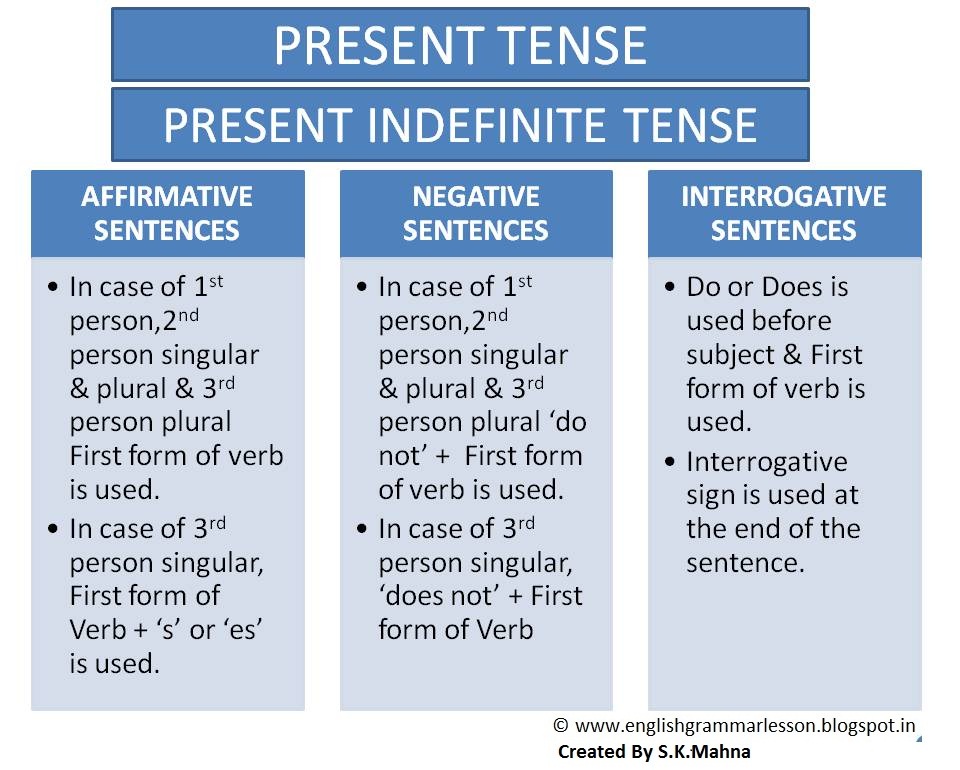
English Learning Made Easy & Simple PRESENT INDEFINITE TENSE
The Present Indefinite Tense, also known as the Simple Present Tense, is a fundamental tense in English grammar. It is used to describe actions, habits, general truths, and recurring events that happen in the present or are considered timeless. This tense allows us to express actions that occur regularly or repeatedly.